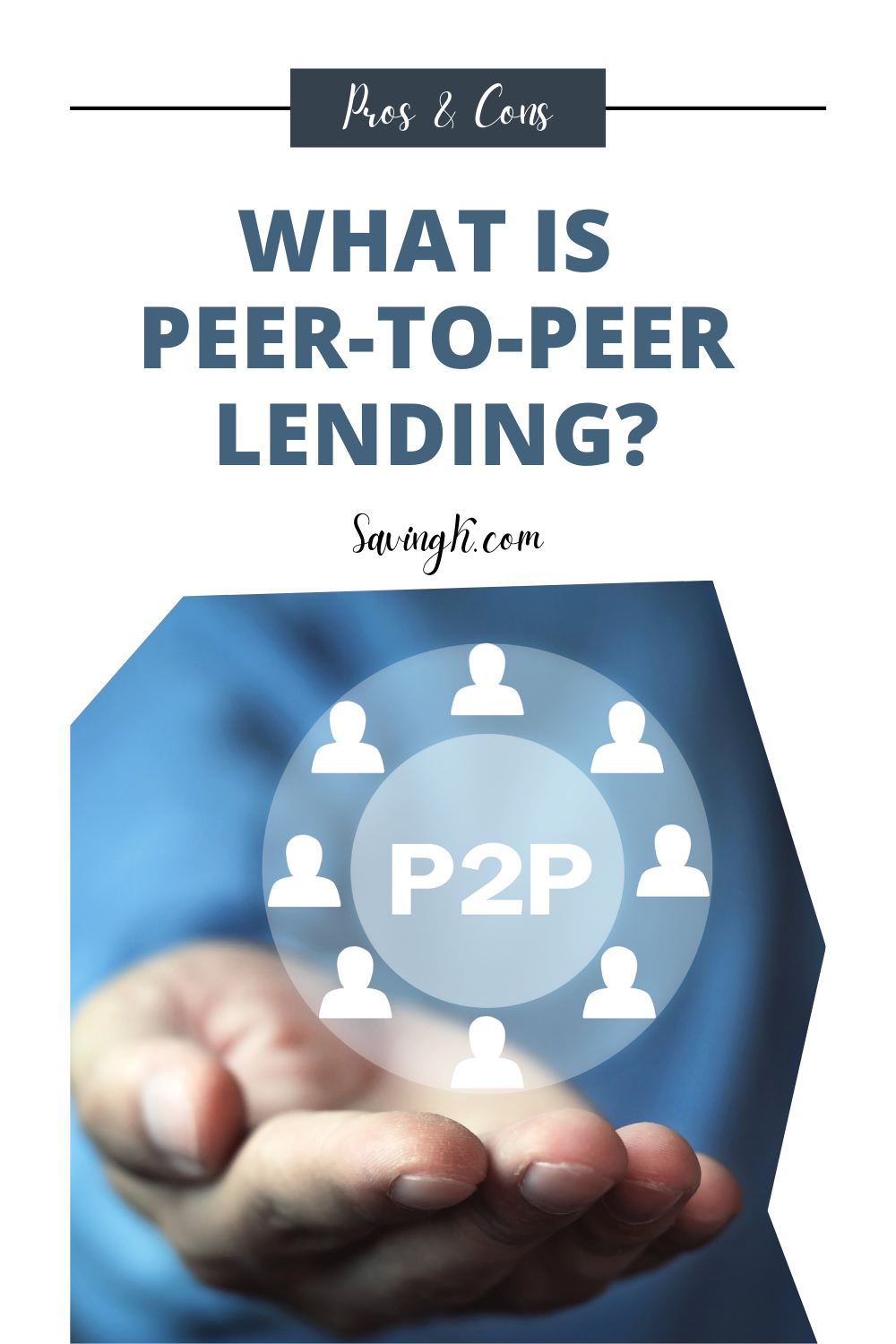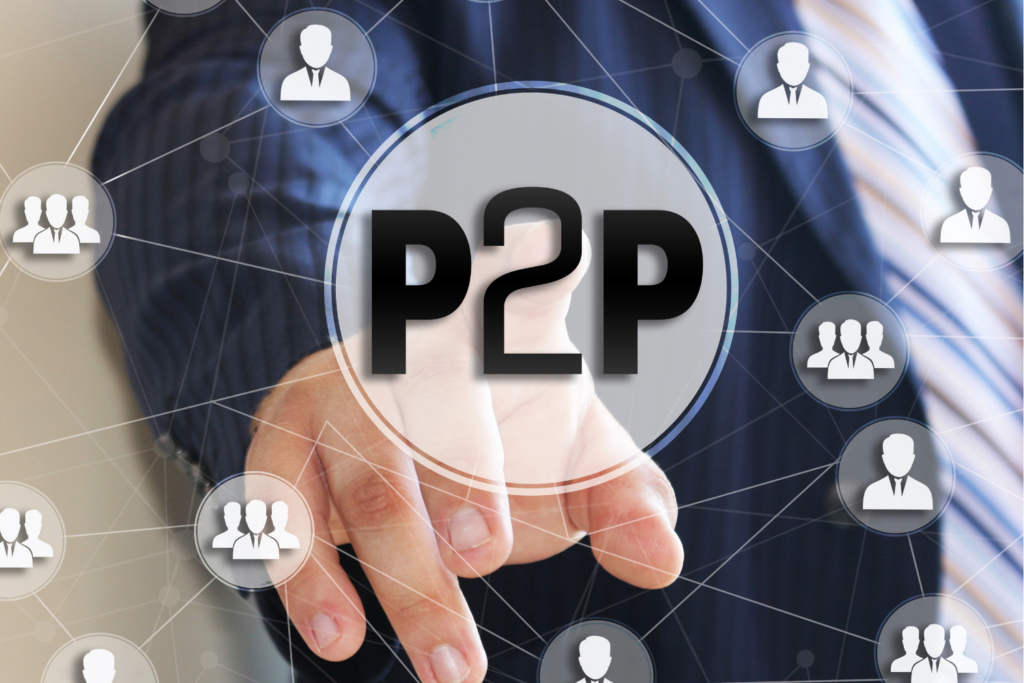
Peer-to-peer lending is a form of investing that has been growing in popularity in recent years. With P2P loans, investors loan money to borrowers through an online platform. This can be a great way to earn a higher return on your investment than you would with traditional savings accounts or bonds. However, there are also some risks involved with peer-to-peer lending, so it’s important to understand the pros and cons before you decide whether this type of investing is right for you.
Contents
What Is Peer-To-Peer Lending?
Lending money is part of the financial system that helps to circulate money throughout the economy. When people save money in a bank, the bank can use that money to make loans to other people. Banks are able to do this because they have been approved by the government to be a part of the financial system. Nowadays, there is a new way to lend money that does not involve banks. This is called peer-to-peer lending.
The way it works is that borrowers and lenders are connected through an online platform. This online platform is responsible for facilitating the loan transaction between the two parties. Borrowers will post what they need a loan for on the platform, and lenders will then decide if they want to lend money to the borrower. If both parties agree to the loan, then the money will be transferred from the lender to the borrower.
The online platform will also collect payments from the borrower and then distribute them to the lender until the loan is paid off.
Benefits of peer-to-peer lending
There are several benefits of peer-to-peer lending.
- It is a much more efficient process than going through a bank. There is no need to go through the hassle of filling out paperwork and waiting for approval from the bank.
- P2P lending is a great way to get access to loans that you may not be able to get from a bank. This is because the lenders on the platform are looking to invest in a variety of different projects, so they are more likely to lend money to someone who may not meet all the requirements that a bank would have.
- Peer-to-peer lending is a great way to make some extra money. Lenders can make money by charging interest on the loans that they give out.
- It is a more secure way to borrow and lend money. The online platform that connects borrowers and lenders is responsible for ensuring that all transactions are safe and secure. This means that both parties do not have to worry about any scams or fraudulent activities.
Risks of peer-to-peer lending
Just like with anything else, there are some risks associated with peer-to-peer lending.
- It is important to note that not all platforms are created equal. There are some platforms that are more reputable than others, so it is important to do your research before choosing a platform.
- Borrowers should be aware that they are taking on a higher risk when borrowing through P2P lending. This is because the lenders are not as regulated as banks, so there is a greater chance that they will not get their money back if the borrower defaults on the loan.
- Lenders should be aware that they may not get their money back if the borrower defaults on the loan. This is because peer-to-peer lending is a riskier investment than putting your money in a bank.
- Lenders should make sure that they are comfortable with the interest rate that they are charging borrowers. If the interest rate is too high, then it may deter borrowers from using the platform.
How to get started with peer-to-peer lending
If you are interested in peer-to-peer lending, then there are a few things that you need to do in order to get started.
First, you need to find a reputable online platform that connects borrowers and lenders. Then, you need to create an account on the platform. Once you have created an account, you will be able to browse through the different loan listings.
Next, you need to choose a loan that you want to invest in. Once you have chosen a loan, you will need to provide the amount of money that you want to lend to the borrower. Finally, you will need to wait for the borrower to repay the loan. The online platform will be responsible for collecting payments from the borrower and distributing them to the lenders.
Where to invest in peer-to-peer lending
There are a few different platforms that you can use to invest in peer-to-peer lending, including:
Prosper
Prosper is one of the largest peer-to-peer lending platforms in the United States. They offer a wide range of loan options, including personal loans, business loans, and student loans.
Lending Club
LendingClub is another popular P2P lending platform. They offer a variety of loan types, including personal loans, business loans, and auto loans.
Upstart
Upstart is a peer-to-peer lending platform that focuses on personal loans. They offer loans for a variety of purposes, including debt consolidation, home improvement, and business expansion.
Funding Circle
Funding Circle is a peer-to-peer lending platform that offers loans to small businesses.
Investing in peer to peer lending platforms like Prosper, LendingClub or Upstart can give you the opportunity to earn a higher return on your investment than you would with traditional savings accounts or bonds.
Pros & Cons of Peer-to-Peer Lending
Here are some of the key pros and cons of peer-to-peer lending:
Pros:
- You can earn a higher return on your investment than with traditional savings accounts or bonds.
- Picking individual loans can give you more control over your investing strategy.
- Online platforms make it easy to get started with peer-to-peer lending.
Cons:
- There is a risk that borrowers will default on their loans, which could lead to losses for investors.
- P2P lending is a relatively new investment strategy, so there is less historical data to help predict future returns.
- You may have to wait longer to get your money back if you invest in longer-term loans.
Overall, peer-to-peer lending can be a great way to earn a higher return on your investment. However, it’s important to understand the risks involved before you get started. If you’re looking for a more conservative investment strategy, traditional savings accounts or bonds may be a better option for you.
Peer-to-Peer Lending FAQs
Here are some answers to common questions about peer-to-peer lending:
Q: What is the average return on investment for peer-to-peer loans?
A: The average return on investment for peer-to-peer loans varies depending on the platform you use and the types of loans you invest in. Generally, returns range from around five percent to twelve percent.
Q: What is the minimum investment for peer-to-peer lending?
A: The minimum investment for peer-to-peer lending platforms varies, but is typically $25 or $50.
Q: What are the risks of investing in peer-to-peer loans?
A: The main risk of investing in P2P loans is that borrowers may default on their loans, which could lead to losses for investors. There is also the risk that platforms could fail or be hacked, which could lead to losses as well.
Conclusion
Peer-to-peer lending is a great way to borrow and lend money. It is more efficient than going through a bank, and it is a more secure way to do business. There are some risks associated with peer-to-peer lending, but they can be mitigated by doing your research before choosing a platform. Always remember that having enough knowledge about a subject lessens the risks involved in it. We hope this article has helped you to understand what peer-to-peer lending is and the benefits that it offers.





